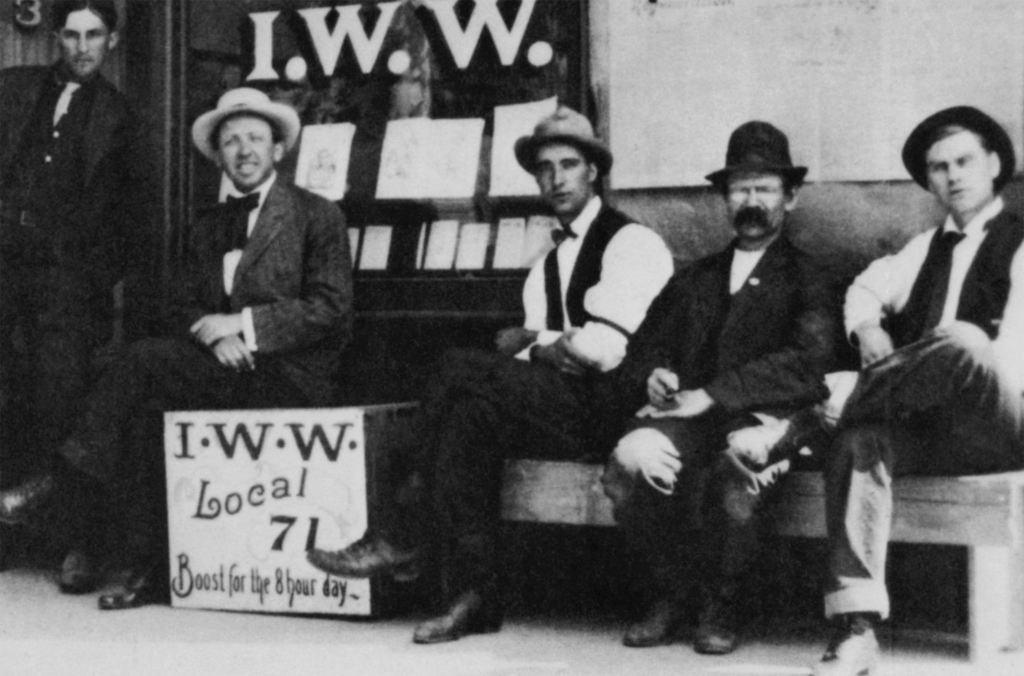
Directed by filmmakers Deborah Shaffer and Stewart Bird, The Wobblies was first released in 1979. Since then, it has come to be seen by members of the YouTube-using generation as a definitive introduction to the Industrial Workers of the World, the international labor union. Now, film distributor Kino Lorber’s restoration of the documentary offers viewers The Wobblies as it was meant to be seen: on the big screen.
Kino Lorber distributed both the original film and the newly restored version. According to Shaffer, she, Bird and Lorber have worked closely since 1977, when the company was first established. Incidentally, 1977 is also the year Shaffer and Bird began to work on The Wobblies.
Back then, neither Shaffer nor Bird imagined the importance that The Wobblies would retain for a resurgent labor movement in 2022. It is doubtful that anyone in 1979 could have predicted the materialization of social conditions today in ways that echo those of the decadent Gilded Age, which first catalyzed the IWW in 1905.
Shaffer and Bird were once members of an agit-prop collective, NewsReel, that formed in 1968 and was active through the early 1990s. The two collaborators met in Minnesota in 1974, on the set of another documentary project.
“Both Stu and I had been working separately on Wobbly projects for almost 10 years,” says Shaffer, referring to IWW members by their nickname, Wobblies. “If we were ever going to do an oral history, time was running out. The people we needed to interview were getting very old.”
This lent a robust sense of urgency to the project — particularly in light of the lack of contemporary attention received by the IWW, as compared to communism.
“There had been a lot of interest in the 1930s and the Communist Party, but few people had considered radicalism at the turn of the century, when the Socialist Party and the IWW were quintessential mass movements,” says Bird. “In spite of a lot of academic attention, there was very little done on the popular level.”
Not only is The Wobblies invaluable as a record of anti-capitalist history, but the methods and techniques employed in producing the documentary were revolutionary. Viewers today have grown accustomed to the work of documentary filmmakers like Ken Burns — yet many fail to recognize that the elements of style and narrative techniques which filmmakers now use as a matter of course were first employed by Shaffer and Bird.
“I think that people with a political or academic perspective want films to be somewhat bookish,” says Shaffer. “Wall-to-wall narration and lectures make them feel more confident that the subject is being adequately addressed.”
“But a film is much more emotional than the written word,” she continues. “One of our goals was to depict the spirit of the Wobblies, their sense of commitment, their energy. Something happens when you hear people talk and sing that cannot be gotten from reading — the look in people’s eyes, the accents, the smiles, the unsaid. That’s what a film gives that a book can’t.”
The cast of The Wobblies includes then-surviving members of the early IWW, all of whom were in their 80s and 90s at the time of filming. The documentary offers one of the last live glimpses of firsthand experience with early 20th century labor struggles. Though these original IWW members are of course no longer alive, The Wobblies preserves their legacy.
Book a screening of The Wobblies or buy your own copy from Kino Lorber.
